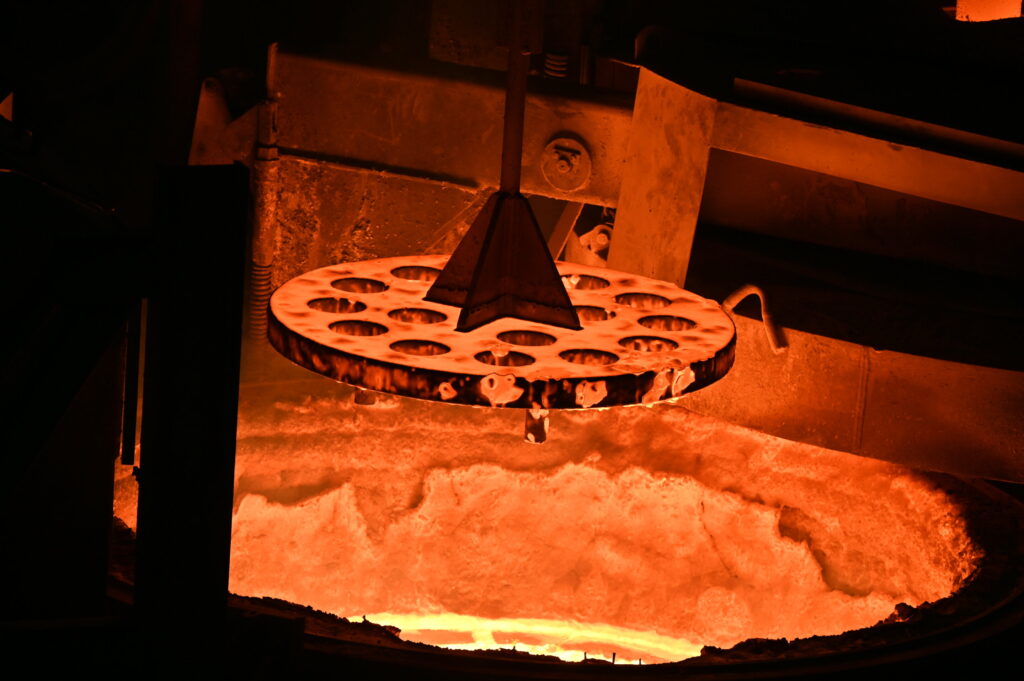In a move which the University deems could well be “transformative” in the transition to net zero, the method is usually reserved for recycling steel, but the furnaces work on cement too – known as a “carbon-hungry” component of concrete.
The University said concrete is the “second-most used material on the planet” after water, and is responsible for approximately 7.5% of total anthropogenic CO₂ emissions.
The Cambridge researchers found that used cement is an effective substitute for lime flux, which is used in steel recycling to remove impurities, and ultimately known as a waste product known as slag.
By replacing lime with used cement, the end-product is recycled cement that can be used to make new concrete.
The method is not said to add any significant costs to concrete or steel production, and “significantly” reduces emissions from both concrete and steel, due to not needing lime flux.
Recent tests carried out by the Materials Processing Institute, a partner in the project, showed that recycled cement can be produced at scale in an electric arc furnace (EAF).
Eventually, this method could produce zero emission cement, if the EAF was powered by renewable energy.
“We held a series of workshops with members of the construction industry on how we could reduce emissions from the sector,” said Professor Julian Allwood from Cambridge’s department of engineering, who led the research. “Lots of great ideas came out of those discussions, but one thing they couldn’t or wouldn’t consider was a world without cement.”
Concrete is made from sand, gravel, water and cement, which serves as a binder. Although it’s a small proportion of concrete, cement is said to be responsible for almost 90% of concrete emissions.
Cement is made through a process called clinkering, where limestone and other raw materials are crushed and heated to about 1,450°C in large kilns. This process converts the materials into cement, but releases large amounts of CO₂ as limestone decarbonates into lime.
‘Thinking outside the box’
Scientists have been investigating substitutes for cement for over a decade, and have said that roughly half of the cement in concrete can be replaced with alternative materials, such as fly ash, but these alternatives need to be chemically activated by the remaining cement in order to harden.
“It’s also a question of volume – we don’t physically have enough of these alternatives to keep up with global cement demand, which is roughly four billion tonnes per year,” said Allwood.
“We’ve already identified the low hanging fruit that helps us use less cement by careful mixing and blending, but to get all the way to zero emissions, we need to start thinking outside the box.”
“We found the combination of cement clinker and iron oxide is an excellent steelmaking slag because it foams and it flows well,” said Dr Cyrille Dunant, also from the department of engineering. “And if you get the balance right and cool the slag quickly enough, you end up with reactivated cement, without adding any cost to the steelmaking process.”
The cement made through this recycling process contains higher levels of iron oxide than conventional cement, but the researchers said this has little effect on performance.
The Cambridge Electric Cement process has been scaling rapidly, and the researchers say they could be producing one billion tonnes per year by 2050, which represents roughly a quarter of current annual cement production.
“Producing zero emissions cement is an absolute miracle, but we’ve also got to reduce the amount of cement and concrete we use,” said Allwood. “Concrete is cheap, strong and can be made almost anywhere, but we just use far too much of it. We could dramatically reduce the amount of concrete we use without any reduction in safety, but there needs to be political will to make that happen.
“As well as being a breakthrough for the construction industry, we hope that Cambridge Electric Cement will also be a flag to help the government recognise that the opportunities for innovation on our journey to zero emissions extend far beyond the energy sector.”









Subscribe for free